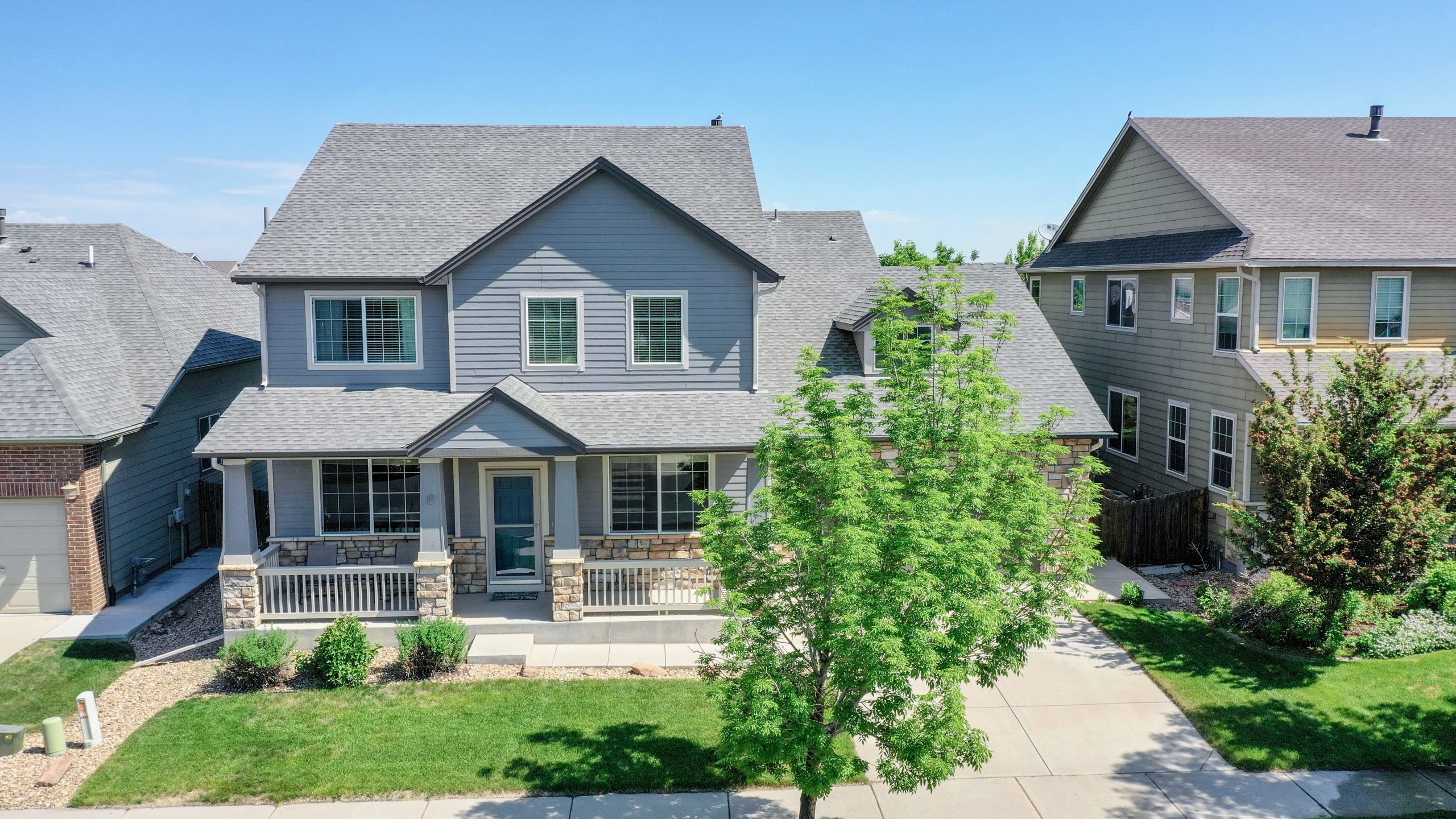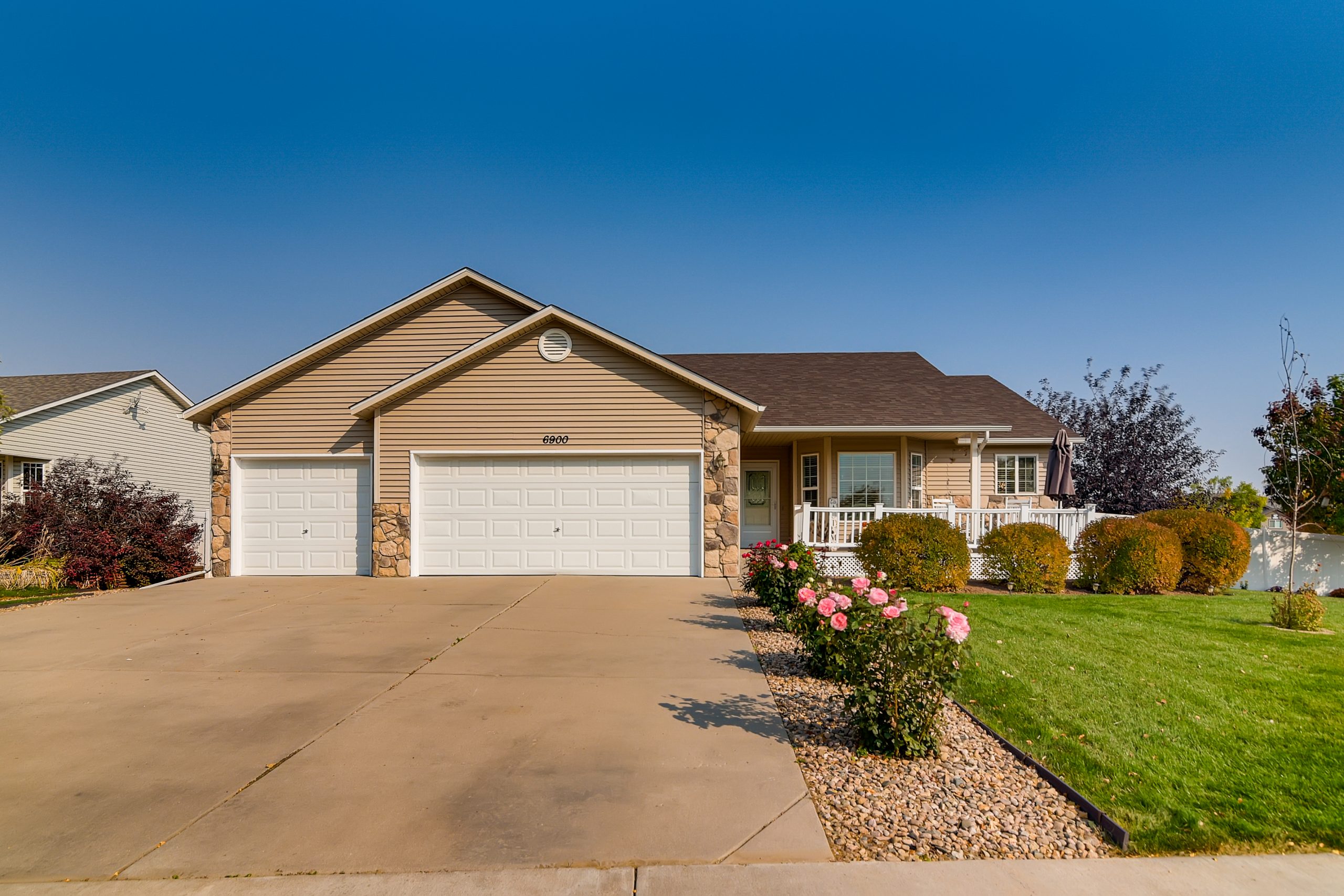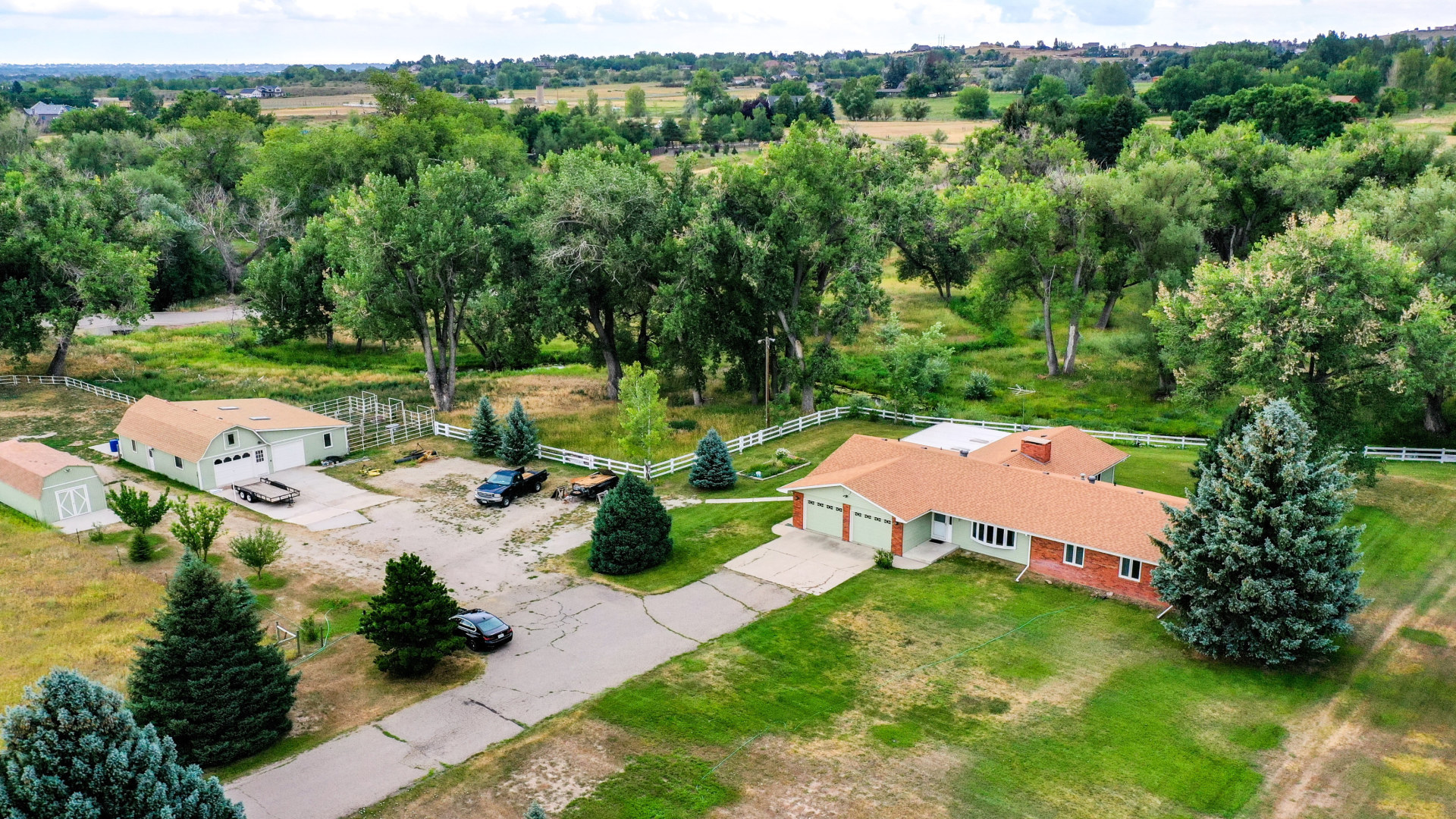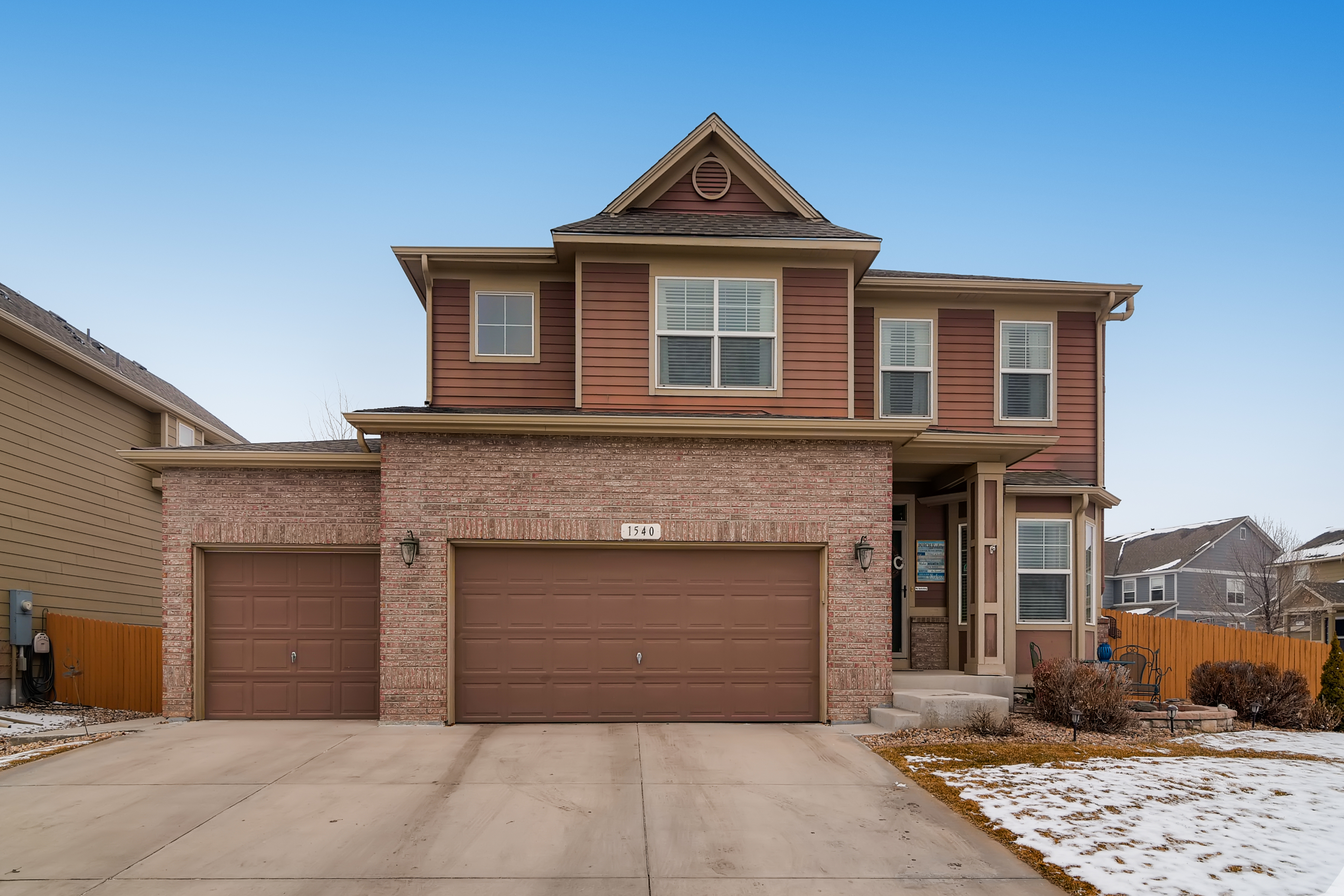6458 Mayfair Ave offers all the space you could want in one of Northern Colorado’s premier neighborhoods! This large open floor plan greets you with high ceilings and open handrail, framing the second story walkway. Boasting six bedrooms, formal dining room, and living space both on the main floor and in the basement, this home has plenty of room for everyone! The large kitchen features double ovens, all appliances included, and substantial counter space. New hot water heater in 2019! Enjoy the summer sitting on the covered front porch, or cozy up next to a fire on your sizable back patio. This neighborhood features a large park, and amazing clubhouse with a pool and workout area. Don’t miss your chance to call Summerfields home! Call (970) 402-7509 to schedule your private showing or click the link below for more details.
Charming Ranch Style Home in Loveland!

Fantastic value in this very well maintained single family home at 2673 Susan Dr. in Loveland! Featuring 3 bed 1 bath, oversized 2 car garage, and a private fence yard to enjoy the summer evenings. The spacious living area leads into a large kitchen with plenty of counter space and all appliances included. No HOA, new roof in 2018, and Blue Ribbon Home Warranty included. Call for your private showing at (970) 402-7509 for more information or click the link below for more details.
Zero Correlation

It’s an election year which means that our clients are asking us if election years impact real estate.
According to research done by Real Trends there is zero correlation between election years and the number of transactions in the market compared to non-election years.
They found that sales were down in 1980, 1988, and 2008 compared to prior years, and sales were up in 1992, 1996, 2000, 2004, 2012, and 2016.
To hear more about what will happen this year in real estate and the factors that really do impact our market, be sure to get registered for our annual Market Forecast event next week.
It’s time to register for our annual forecast event. We will be live at 5:30 on January 16th at the Marriott Hotel. Back by popular demand is our Chief Economist Matthew Gardner. Save your seat at NocoForecast.com.
Colorado Real Estate Market Update
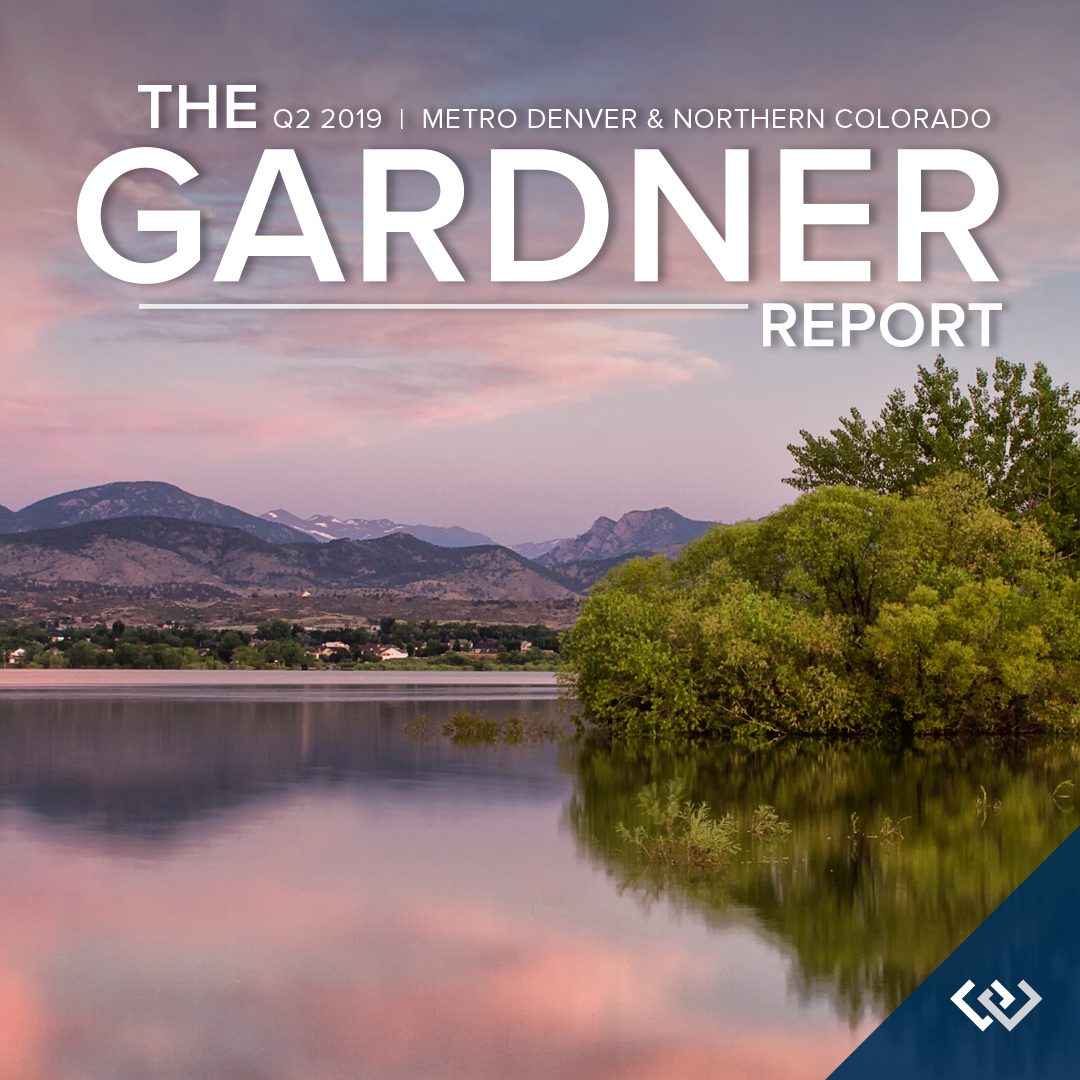

ECONOMIC OVERVIEW
Colorado’s economy continues to grow with the addition of 45,900 new non-agricultural jobs over the past 12 months, which represents a growth rate of 1.7%. As I have stated in the last two Gardner Reports, we continue to see a modest slowdown in employment gains, but that is to be expected at this stage of the business cycle.
In May, the state unemployment rate was 3.2%, up from 3.1% a year ago. The increase in the rate is essentially due to labor force growth, which rose by over 55,700 people over the past year. On a seasonally adjusted basis, unemployment rates in all the markets contained in this report were lower than a year ago and are at full employment.
HOME SALES
- In the second quarter of 2019, 17,853 homes sold. This is a drop of 1% compared to the second quarter of 2018 but a substantial 59.9% higher than the first quarter of this year. Pending sales — a sign of future closings — rose 5.8%, suggesting that closings in the third quarter are likely to show further improvement.
- Half of the counties contained in this report saw sales growth, while the other half had fewer closings. Sales in the small Clear Creek County fell precipitously. However, it was only a drop of 20 sales.
- The marginal drop in the number of sales compared to a year ago can be attributed to the ongoing increase in listing activity (+34.8%), which continues to give would-be home buyers more choice and less urgency.
- Inventory levels continue to rise, but demand for housing appears to be ongoing. I am not concerned by the marginal year-over-year slowdown and anticipate that sales will rise again in the third quarter.

HOME PRICES
|
 |

DAYS ON MARKET
- The average number of days it took to sell a home in the markets contained in this report rose four days over the second quarter of 2018.
- The amount of time it took to sell a home rose in all counties except Gilpin when compared to the second quarter of 2018.
- It took an average of 29 days to sell a home in the region — a drop of 13 days compared to the first quarter of this year.
- It is likely that the drop in time-on-market was a function of the emerging spring selling season as well as falling mortgage rates.

CONCLUSIONS
 |
This speedometer reflects the state of the region’s real estate market using housing inventory, price gains, home sales, interest rates, and larger economic factors.
For the second quarter of 2019, I continue the trend I started last summer and have moved the needle a little more in favor of buyers. I continue to closely monitor listing activity to see if we get any major bumps above the traditional increase because that may further slow home price growth. However, the trend for 2019 will continue to be a move toward a more balanced market. |
ABOUT MATTHEW GARDNER
 |
As Chief Economist for Windermere Real Estate, Matthew Gardner is responsible for analyzing and interpreting economic data and its impact on the real estate market on both a local and national level. Matthew has over 30 years of professional experience both in the U.S. and U.K.
In addition to his day-to-day responsibilities, Matthew sits on the Washington State Governors Council of Economic Advisors; chairs the Board of Trustees at the Washington Center for Real Estate Research at the University of Washington; and is an Advisory Board Member at the Runstad Center for Real Estate Studies at the University of Washington where he also lectures in real estate economics. |
The following analysis of the Metro Denver & Northern Colorado real estate market (which now includes Clear Creek, Gilpin, and Park counties) is provided by Windermere Real Estate Chief Economist Matthew Gardner. We hope that this information may assist you with making better-informed real estate decisions. For further information about the housing market in your area, please don’t hesitate to contact your Windermere agent.
Location, Style, and Comfort!
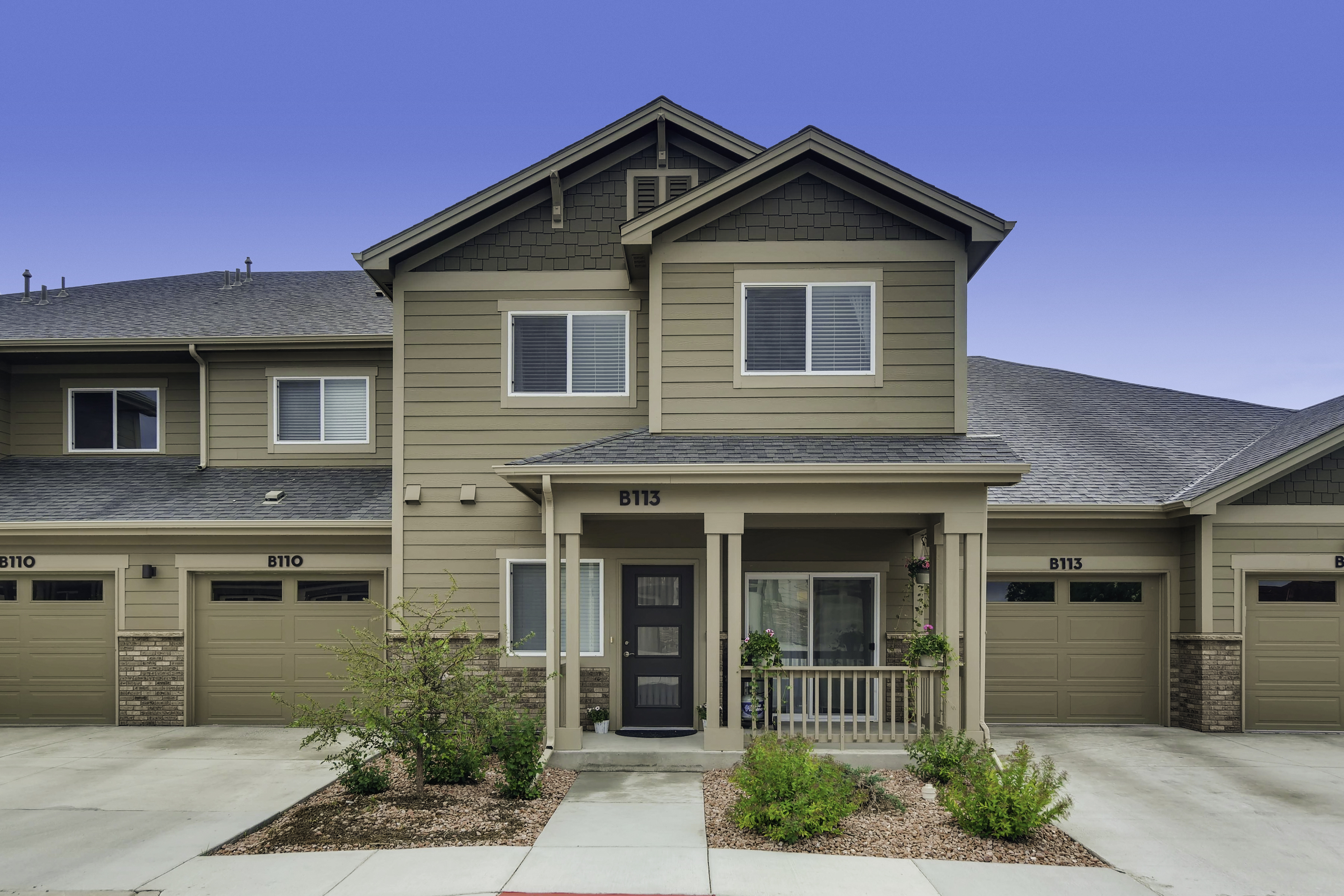
This town-home style condo at 2608 Kansas Dr B113 in Fort Collins was built in 2016 showcases beautiful finishes! Laminate hardwood floors in the kitchen and dining opening to a large living space with a cozy fireplace. Patio access for grilling or entertaining off the dining room. Granite counter-tops in the kitchen and bathrooms. Large master includes en-suite bathroom and walk in closet. All this located 10 min from Old Town near restaurants and shopping! A perfect place for your new home! Call for your private showing at (970) 402-7509 for more information or click the link below for more details.
http://windermerenoco.com/listing/96733732
Colorado Real Estate Market Update

The following analysis of the Metro Denver & Northern Colorado real estate market (which now includes Clear Creek, Gilpin, and Park counties) is provided by Windermere Real Estate Chief Economist Matthew Gardner. We hope that this information may assist you with making better-informed real estate decisions. For further information about the housing market in your area, please don’t hesitate to contact your Windermere agent.
ECONOMIC OVERVIEW
Colorado’s economy continues to grow with the addition of 44,800 new non-agricultural jobs over the past 12 months. This represents a reasonable growth rate of 1.7%. As stated in last quarter’s Gardner Report, we continue to see a modest slowdown in employment gains, but that’s to be expected at this stage of the business cycle. I predict that employment growth in Colorado will pick back up as we move through the year, adding a total of 70,000 new jobs in 2019, which represents a growth rate of 2.6%.
In February, the state unemployment rate was 3.7%, up from 2.9% a year ago. The increase is essentially due to labor force growth, which rose by more than 84,000 people over the past year. On a seasonally adjusted basis, unemployment rates in all the markets contained in this report haven’t moved much in the past year, but Boulder saw a modest drop (2.7%), and the balance of the state either remained at the same level as a year ago or rose very modestly.
HOME SALES
- In the first quarter of 2019, 11,164 homes sold — a drop of 3% compared to the first quarter of 2018 and down 13.5% from the fourth quarter of last year. Pending sales in the quarter were a mixed bag. Five counties saw an increase, but five showed signs of slowing.
- The only market that had sales growth was Adams, which rose 4.9%. The rest of the counties contained in this report saw sales decline, with a significant drop in the small Park County area.
- I believe the drop in the number of home sales is partially due to the significant increase in listings (+45.6%), which has given would-be home buyers more choice and less need to act quickly.
- As mentioned above, inventory growth in the quarter was significant, but I continue to believe that the market will see sales rise. I expect the second half of the year to perform better than the first.

HOME PRICES
 Home prices continue to trend higher, but the rate of growth is tapering. The average home price in the region rose just 2.1% year-over-year to $456,243. Home prices were .3% higher than in the fourth quarter of 2018.
Home prices continue to trend higher, but the rate of growth is tapering. The average home price in the region rose just 2.1% year-over-year to $456,243. Home prices were .3% higher than in the fourth quarter of 2018.- I anticipate that the drop in interest rates early in the year will likely get more buyers off the fence and this will allow prices to rise.
- Appreciation was again strongest in Park County, where prices rose 21.9%. We still attribute this rapid increase to it being a small market. Only Clear Creek County experienced a drop in average home price. Similar to Park County, this is due to it being a very small market, making it more prone to significant swings.
- Affordability remains an issue in many Colorado markets but that may be offset by the drop in interest rates.

DAYS ON MARKET
- The average number of days it took to sell a home in Colorado rose five days compared to the first quarter of 2018.
- The amount of time it took to sell a home dropped in two counties — Gilpin and Park — compared to the first quarter of 2018. The rest of the counties in this report saw days-on-market rise modestly with the exception of the small Clear Creek market, which rose by 26 days.
- In the first quarter of 2019, it took an average of 42 days to sell a home in the region, an increase of four days compared to the final quarter of 2018.
- Job growth drives housing demand, but buyers are faced with more choice and are far less frantic than they were over the past few years. That said, I anticipate the late spring will bring more activity and sales.

CONCLUSIONS

This speedometer reflects the state of the region’s real estate market using housing inventory, price gains, home sales, interest rates, and larger economic factors.
For the first quarter of 2019, I have moved the needle a little more in favor of buyers. I am watching listing activity closely to see if we get any major bumps above the traditional increase because that may further slow home price growth; however, the trend for 2019 will continue towards a more balanced market.

As Chief Economist for Windermere Real Estate, Matthew Gardner is responsible for analyzing and interpreting economic data and its impact on the real estate market on both a local and national level. Matthew has over 30 years of professional experience both in the U.S. and U.K.
In addition to his day-to-day responsibilities, Matthew sits on the Washington State Governors Council of Economic Advisors; chairs the Board of Trustees at the Washington Center for Real Estate Research at the University of Washington; and is an Advisory Board Member at the Runstad Center for Real Estate Studies at the University of Washington where he also lectures in real estate economics.
Simple Steps for Maintaining Air Quality in Your Home

Most of us tend to think of air pollution as something that occurs outdoors where car exhaust and factory fumes proliferate, but there’s such a thing as indoor air pollution, too. Since the 1950s, the number of synthetic chemicals used in products for the home has increased drastically, while at the same time, homes have become much tighter and better insulated. As a result, the EPA estimates that indoor pollutants today are anywhere from five to 70 times higher than pollutants in outside air.
Luckily, there are many ways to reduce indoor air pollution. We all know that buying organic and natural home materials and cleaning supplies can improve the air quality in our homes, but there are several other measures you can take as well.
How pollutants get into our homes
Potentially toxic ingredients are found in many materials throughout the home, and they leach out into the air as Volatile Organic Compounds or VOCs. If you open a can of paint, you can probably smell those VOCs. The “new car smell” is another example of this. The smell seems to dissipate after a while, but VOCs can actually “off-gas” for a long time, even after a noticeable smell is gone.
We all know to use paint and glue in a well-ventilated room, but there are many other materials that don’t come with that warning. For instance, there are chemicals, such as formaldehyde, in the resin used to make most cabinets and plywood particle board. It’s also in wall paneling and closet shelves, and in certain wood finishes used on cabinets and furniture. The problems aren’t just with wood, either. Fabrics—everything from draperies to upholstery, bedding, and carpets—are a potent source of VOCs.
The good news about VOCs is that they do dissipate with time. For that reason, the highest levels of VOCs are usually found in new homes or remodels. If you are concerned about VOCs, there are several products you can buy that are either low- or no-VOC. You can also have your home professionally tested.
How to reduce VOCs in your home
Make smart choices in building materials.
- For floors, use tile or solid wood—hardwood, bamboo, or cork – instead of composites.
- Instead of using pressed particle board or indoor plywood, choose solid wood or outdoor-quality plywood that uses a less toxic form of formaldehyde.
- Choose low-VOC or VOC-free paints and finishes.
Purify the air that’s there.
- Make sure your rooms have adequate ventilation, and air out newly renovated or refurnished areas for at least a week, if possible.
- Clean ductwork and furnace filters regularly.
- Install air cleaners if needed.
- Use only environmentally responsible cleaning chemicals.
- Plants can help clean the air: good nonpoisonous options include bamboo palm, lady palm, parlor palm, and moth orchids.
- Air out freshly dry-cleaned clothes or choose a “green” cleaner.
Fight the carpet demons.
- Choose “Green Label” carpeting or a natural fiber such as wool or sisal.
- Use nails instead of glue to secure carpet.
- Install carpet LAST after completing painting projects, wall coverings, and other high-VOC processes.
- Air out newly carpeted areas before using.
- Use a HEPA vacuum or a central vac system that vents outdoors.
Prevent Mold.
- Clean up water leaks fast.
- Use dehumidifiers, if necessary, to keep humidity below 60 percent.
- Don’t carpet rooms that stay damp.
- Insulate pipes, crawl spaces, and windows to eliminate condensation.
- Kill mold before it gets a grip with one-half cup of bleach per gallon of water.
We hope this information is helpful. If you would like to learn more about VOCs and indoor air quality, please visit http://www.epa.gov/iaq/.
 Facebook
Facebook
 X
X
 Pinterest
Pinterest
 Copy Link
Copy Link
